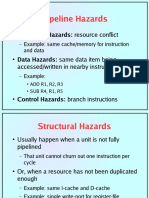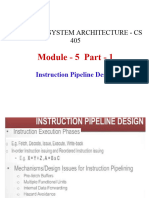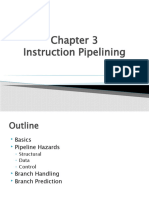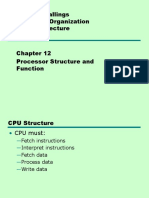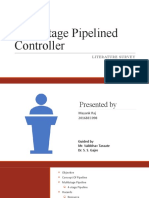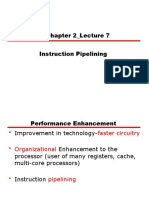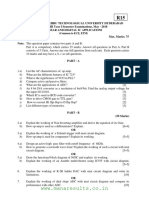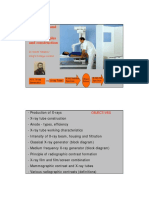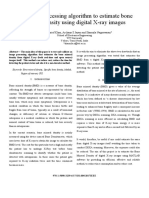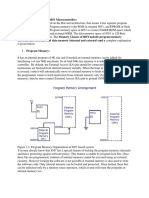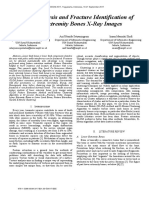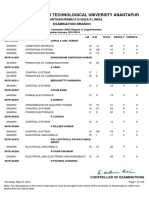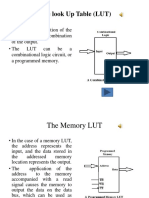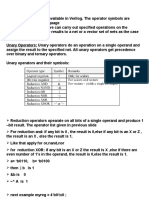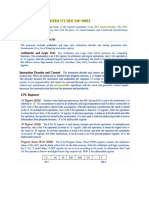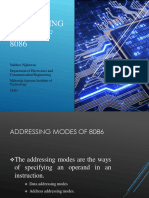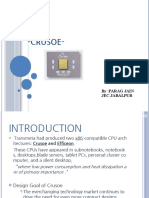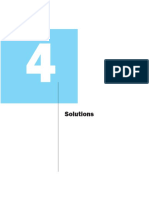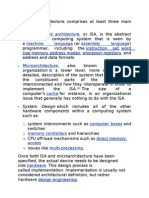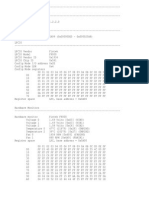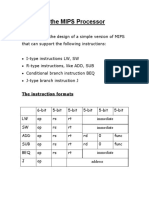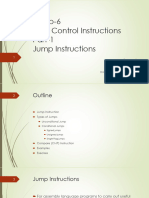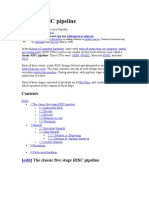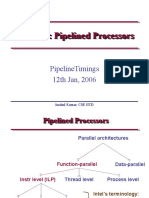0% found this document useful (0 votes)
200 views28 pagesCPU Pipelining Concepts
Pipelining is a technique where the instruction execution process is divided into discrete stages so that multiple instructions can be overlapped in execution. By partitioning the instruction execution process into stages like fetch, decode, execute etc and ensuring independent hardware for each stage, multiple instructions can progress through the pipeline simultaneously, improving instruction throughput. However, pipelining can introduce hazards like structural hazards from resource conflicts, data hazards from dependencies between instructions, and control hazards from branches. Solutions involve buffering, forwarding, interlocking, and dynamic/static scheduling.
Uploaded by
Syed AshmadCopyright
© Attribution Non-Commercial (BY-NC)
We take content rights seriously. If you suspect this is your content, claim it here.
Available Formats
Download as PDF, TXT or read online on Scribd
0% found this document useful (0 votes)
200 views28 pagesCPU Pipelining Concepts
Pipelining is a technique where the instruction execution process is divided into discrete stages so that multiple instructions can be overlapped in execution. By partitioning the instruction execution process into stages like fetch, decode, execute etc and ensuring independent hardware for each stage, multiple instructions can progress through the pipeline simultaneously, improving instruction throughput. However, pipelining can introduce hazards like structural hazards from resource conflicts, data hazards from dependencies between instructions, and control hazards from branches. Solutions involve buffering, forwarding, interlocking, and dynamic/static scheduling.
Uploaded by
Syed AshmadCopyright
© Attribution Non-Commercial (BY-NC)
We take content rights seriously. If you suspect this is your content, claim it here.
Available Formats
Download as PDF, TXT or read online on Scribd
/ 28


